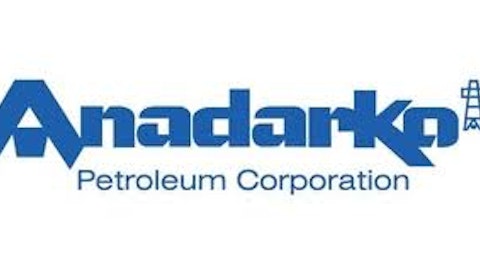Miller Energy Resources Inc (NYSE:MILL) is an oil and natural gas exploration, production and drilling company operating in the Cook Inlet area of Alaska and in the heart of Tennessee’s Appalachian Basin. The stock has been moving for 12 months now in a range from $3.50 to $5 per share, making it easy for any trader to earn money. Has the time come for Miller to break $5 and help the investors make money, too?
Miller’s biggest bet is Alaska. It holds 753,466 net acres there and it owns over $300 million in assets to support Alaskan production. It has also infrastructure in place to support growth and its Alaskan facilities have the capacity to process 50,000 barrels of oil equivalent per day, or boepd for short.

Growth And Valuation
The company produced only 850 boepd in Q2 FY 2013, but it seems that a production jump is coming. The RU-1 well has demonstrated an initial production of 482 barrels of oil per day, and it averaged 260 bopd during November 2012. The RU-4 well has been producing at 1 million cubic feet per day, and Miller expects to have additional production from RU-7 and RU-3 wells by March 2013. It is estimated that RU-7 and RU-3 will add between 300 to 600 boepd of production.
The gassy production from RU-3 well will be sold between $8 and $12 per thousand cubic feet in the area because Alaska suffers from a natural gas supply shortage which made XTO Energy shut down two of their production platforms in the Cook Inlet. RU-2 and RU-5 will also be complete by this summer with expectations of 1000+ boepd.
From the Tennessee front, things look encouraging, too. The rig of the first well there encountered a pay section of approximately 2,300 feet in the horizontal section of the well. The well tested at a restricted rate of 487 boepd (75% oil). The second successful horizontal oil well in Tennessee was completed few days ago and it showed the same encouraging traits as the first well.
Miller lost money in Q2 FY 2013 and this is one of the reasons why it trades below its book value (PBV=0.6) currently. However, the operating cash flow returned back to positive territory in the last two quarters. The debt/equity ratio is just 0.15 but the D/CF (annualized) ratio is as high as 3.46. Miller’s 2P Reserves totaled 17.4 MMboe and the current enterprise value is $210 million, giving a decent $12.07/boe of 2P reserves and a whopping $250,000/boepd.
Acquisition Target
Miller is the smallest fish in an ocean of resources. About 1.4 billion barrels of oil was discovered in Cook Inlet in the early stage of its development. In a new assessment of undiscovered, technically recoverable oil and gas resources in the Cook Inlet region of south-central Alaska, the USGS estimates that mean undiscovered volumes of nearly 600 million barrels of oil, about 19 trillion cubic feet of natural gas, and 46 million barrels of natural gas liquids await discovery in this area.
Referring to Cook Inlet, Joe Balash, deputy commissioner of Alaska’s Natural Resources division, noted that “we’re sitting on what, by any other measure, is a world-class basin.” The giant Prudhoe Bay oil field, discovered in 1968, got all the attention from the oil hunters and the industry activity in the Cook Inlet Basin dropped off substantially. However, Prudhoe Bay’s production has been declining during the last years and the oil finders had to turn their heads elsewhere in Alaska bringing the Cook Inlet Basin on the top of their Alaskan priorities recently.
Miller’s neighbor is Apache Corporation (NYSE:APA) which has leased 1 million acres in the Cook Inlet Basin. Apache estimates that there are at least another 1.3 billion to 1.4 billion barrels of oil yet to be discovered in the basin. According to Apache’s CEO Rod Eichler, the Cook Inlet “is a play that is just ripe for exploitation utilizing modern seismic technology”. This is why the company added to its holdings in the Cook Inlet in 2012, winning bids for seven tracts for exploration.
In August 2012, the company announced its plans to drill its first well there by December 2012. Apache secured the Patterson-UTI’s drilling rig which was transported via truck and barge from the Bakken play in North Dakota. About 100 people are employed by Apache’s contractors and subcontractors during the drilling operation and the investors should expect more news from this front later in 2013.
Anadarko Petroleum Corporation (NYSE:APC) has also assets in the Cook Inlet Basin and in Alaska’s National Petroleum Reserve further north, where it bid on 125 blocks in May 2012, winning 99 of the bids. 92 of these bids will be operated under a 22% WI for Anadarko, and Anadarko will be 100% owner and operator of the remaining seven. So it is clear that Anadarko is expanding its operations in Alaska and it could become an aggressive player in the Cook Inlet Basin too.
Foolish Conclusion
All in all, Miller is not a bad bet at the current levels. Given its recent successful drilling results from Alaska and Tennessee, the company seems to be moving to the right direction. If Miller continues to expand its production at a moderate pace without piling up debt, the positive momentum will return driving the stock at higher valuations.
The article Is This The Right Time To Bet On Miller Energy Resources ? originally appeared on Fool.com and is written by Nathan Kirykos.
Copyright © 1995 – 2013 The Motley Fool, LLC. All rights reserved. The Motley Fool has a disclosure policy.





